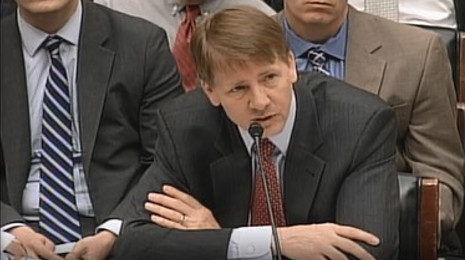CFPB to Release Disparate Impact White Paper

Consumer Financial Protection Bureau director Richard Cordray confirmed on Wednesday that the agency plans to release a white paper about how regulators are using the proxy method of finding disparate impact.
In what’s being described as “a very helpful development,” Consumer Financial Protection Bureau director Richard Cordray confirmed on Wednesday that the agency plans to release a white paper about how regulators are using the proxy method of finding disparate impact to determine if finance companies that perform indirect auto lending are being discriminatory.
Cordray indicated this white paper will be released this summer. He made the declaration when he testified during a hearing held by the U.S. House Financial Services Committee to share the CFPB’s semiannual report.
“I think it’s been a source of frustration to the committee, to me and to the bureau that we’ve been back and forth on different kinds of information about this,” Cordray said about questions regarding disparate impact in the vehicle finance space. “I think we’re providing a lot of information but people identify other information they want. Partly as a result of that, we are going to put out a white paper on the proxy methodology that will try to address this very directly later this summer.”
“We’ll continue to try to be responsive on this,” Cordray continued. “The reality is the auto industry and the auto lenders, they know all about this because they’re constantly monitoring it. They have to fend off private lawsuits whether the CFPB ever existed or not. They do the same analysis that we do, I believe. We’ve had lots of discussions with them. We’d like to have more. It’s been an ongoing dialogue.”
To gauge how this development might impact the industry, SubPrime Auto Finance News reached out to former CFPB official Rick Hackett, who now is a partner at Hudson Cook. Hackett previously served as the head of the Office of Installment and Liquidity Lending Markets in the Division of Research, Markets and Regulations. His responsibilities at the bureau included advising all of the regulator’s divisions with respect to market information and policy issues in the installment and specialty lending areas, including vehicle finance, student lending and payday lending.
“The promised white paper on bureau methodology is a very helpful development,” Hackett said. “The bureau will help compliance across the industry by clarifying what they would expect to see in the methods of lender self-testing. I suspect we will see basics of (Bayesian Integrated Surname and Geocoding analysis) and, hopefully, some information on controls that the bureau uses or considers legitimate for use. The bureau should have enough experience now to both explain its basic process and comment on what it has seen in suggested alternative approaches from lenders.”
Hackett also touched on how difficult enforcement actions will be to implement based on disparate impact even after the CFPB white paper is released.
“The other difficult question is what level of disparity is actionable,” Hackett said. “There is a fair argument that, as the bureau has said, there is no single number below which there is a safe harbor. But it might be helpful to at least describe a range of numbers or other less specific thresholds that would be a factor, along with other relevant information (such as the lender’s existing fair lending compliance, past efforts to work with dealers, existing consumer remediation programs, etc.) in determining the regulatory approach the bureau will use.”
The CFPB used its proxy method and disparate impact to hand out the federal government’s largest auto loan discrimination settlement in history.
Just before Christmas, the CFPB and the Department of Justice ordered Ally Financial to pay $80 million in damages to harmed African American, Hispanic, and Asian and Pacific Islander borrowers, along with another $18 million in penalties.
Regulators determined that more than 235,000 minority borrowers paid higher interest rates for their vehicle loans between April 2011 and December of last year because of what federal officials described as “Ally’s discriminatory pricing system.”
Perhaps this CFPB white paper will allay concerns held by many industry outlets. Back in March during an event hosted by the U.S. Chamber, Andy Koblenz, executive vice president and general counsel for the National Automobile Dealers Association, still had many questions about how the CFPB intends to oversee vehicle financing.
“When you look at the indirect auto lending area, every indirect auto lender that I’ve spoken to when I asked them if they understand what the methodology that the CFPB is using for their disparate impact analysis, whether it’s the proxy methodology or the statistical controls methodology, they all say no and they’re still guessing at it,” Koblenz told attendees at the eighth annual Capital Markets Summit orchestrated by the chamber’s Center of Capital Markets Competitiveness.

 View The Latest Edition
View The Latest Edition

